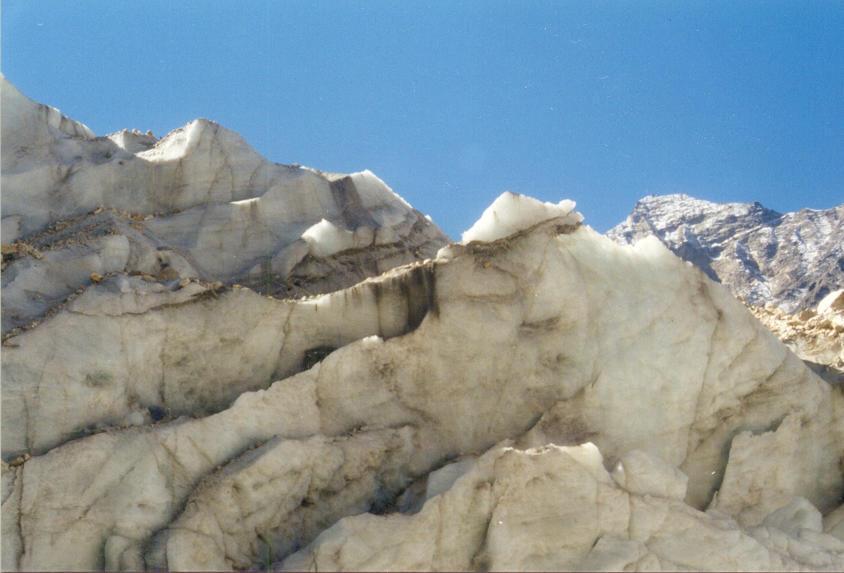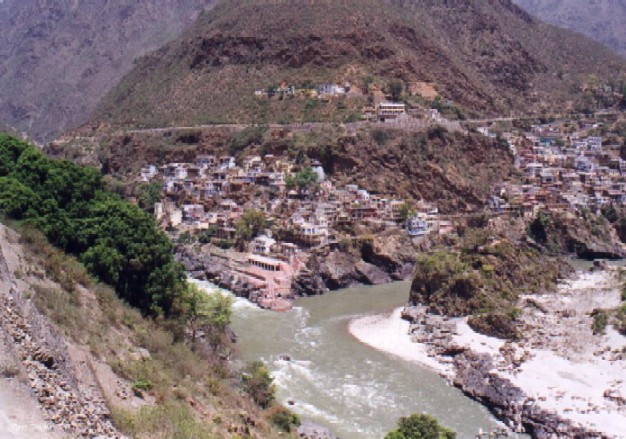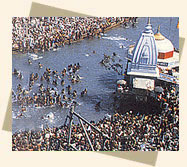| Section1 : Course of Ganga
|
||
| SECTION 1 Course of Ganga
SECTION 2 SECTION 3 SECTION 4 SECTION 5 SECTION 6 SECTION 7 SECTION 8 SECTION 9 SECTION 10 SECTION 11
|
Course
The Ganges originates in the Himalayas at the confluence of five headstreams – the Bhagirathi, Mandakini, Alaknanda, Dhauliganga, and Pindar at Devaprayag in the Indian state of Uttarakhand. Out of the five, the Bhagirathi is held to be the source stream originating at the Gangotri Glacier at an elevation of 7,756 m (25,446 ft). The streams are fed by melting snow and ice from glaciers including glaciers from peaks such as Nanda Devi and Kamet.
After travelling 200 km through the Himalayas, the Ganges emerges at the pilgrimage town of Haridwar in the Shiwalik Hills. At Haridwar, a dam diverts some of its waters into the Ganges Canal, which links the Ganges with its main tributary, the Yamuna. The Ganges which till this point flows in a south-western direction now begins to flow in a south-eastern direction through the plains northern India.
From Haridwar the river follows an 800 km (500 mi) winding course passing through the city of Kanpur. The Yamuna, which originates less than a hundred miles east of the Bhagirathi, flows parallel to the Ganga and a little to the south for most of its course before merging with the Ganga at the holy city of Allahabad, also known as Triveni Sangam (literally, Three-way Junction, the third river being the mythical Saraswati which is also supposed to be an underground river). New Delhi, capital of India, and Agra, site of the Taj Mahal, are two of the major cities on the Yamuna. Joined by numerous rivers such as the Kosi, Son, Gandak and Ghaghra, the Ganges forms a formidable current in the stretch between Allahabad and Malda in West Bengal. On its way it passes the towns of Mirzapur, Varanasi, Patna and Bhagalpur. At Bhagalpur, the river meanders past the Rajmahal Hills, and beings to change course southwards. At Pakaur, the river begins its first attrition with the branching away of its first distributary, the River Bhagirathi, which goes on to form the River Hooghly. Close to the border with Bangladesh, the Farakka Barrage, built in 1974 controls the flow of the Ganges, diverting some of the water into a feeder canal linking the Hooghly to keep it relatively silt free. After entering Bangladesh, the main branch of the Ganges is known as Padma River till it is joined by the Jamuna River the largest distributary of the Brahmaputra. Further downstream, the Ganges is fed by the Meghna River, the second largest distributary of the Brahmaputra and takes on its name. Fanning out into the 350 km (220 mi) wide Ganges Delta, it empties out into the Bay of Bengal. Only two rivers, the Amazon and Congo have a higher discharge.
|






